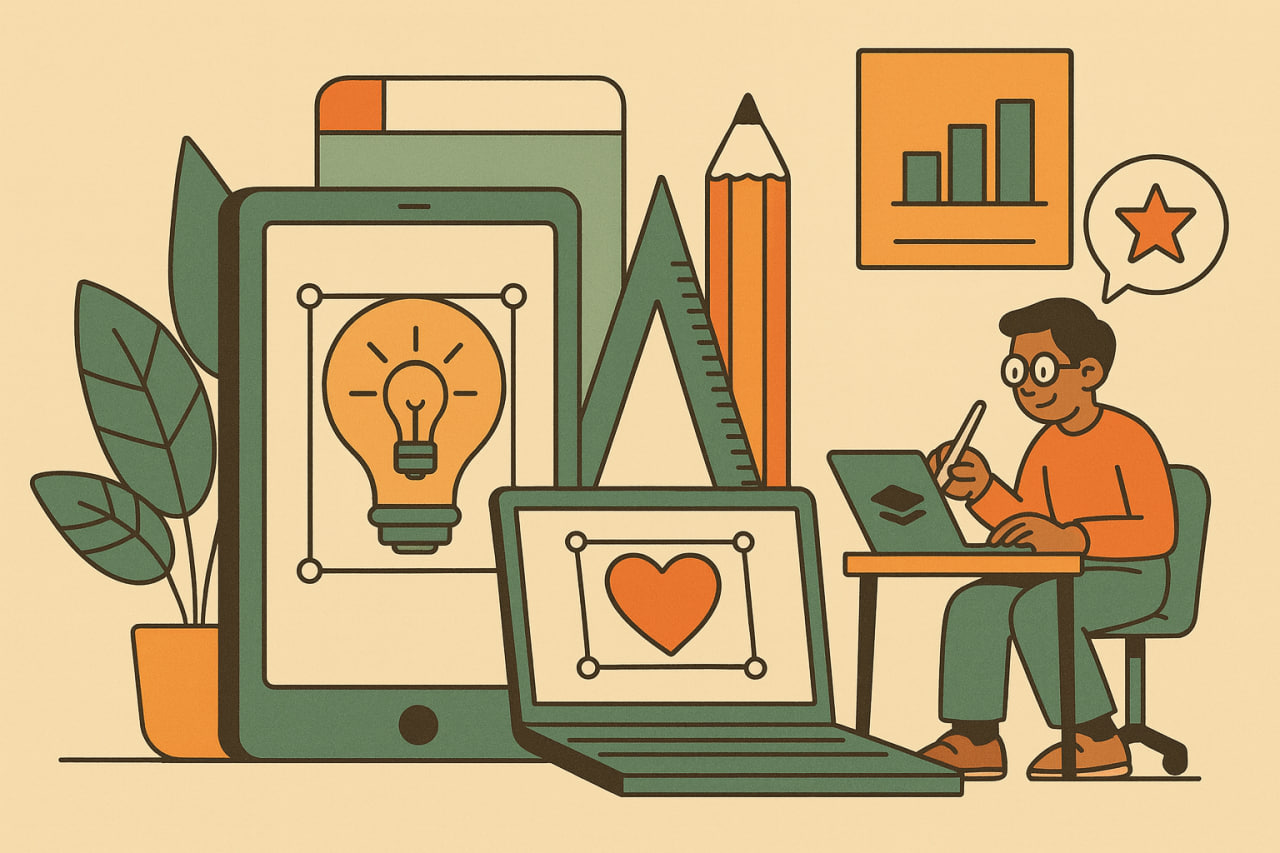Top 15 Best Tools for Design in 2025
Explore the 15 best design tools in 2025 to create, collaborate, and innovate. From AI-powered platforms to industry staples, perfect for pros and beginners alike.

Why Design Tools Matter More Than Ever
Design is no longer a “nice-to-have.” In today’s world of crowded digital spaces and fast consumer attention spans, design is strategy. Whether you’re a consultant preparing proposals, a startup founder pitching investors, or a corporate team managing a global brand, design defines how your message is received.
The best tools democratize creativity. They allow non-designers to produce professional work while giving experts the power to scale their craft. In 2025, design tools are not just about aesthetics—they are about communication, storytelling, and brand trust.
What Makes a Design Tool “The Best”?
Great design tools share five traits:
- Ease of use: Accessible for both beginners and professionals.
- Collaboration: Teams can work together in real time.
- Scalability: Useful for quick assets and full-scale campaigns.
- Integration: Fits into larger workflows (marketing, dev, product).
- Innovation: Leverages AI, automation, or templates to speed creation.
The Top 15 Design Tools You Need in 2025
1. Figma: Collaborative Design at Scale
Figma has become the backbone of modern design teams. Its cloud-first approach means multiple people can edit in real time.
- Why it works: Eliminates version chaos and keeps everyone on the same page, from designers to marketers.
- Example: A startup can design a website mockup and invite developers, copywriters, and investors to comment directly on the file.
2. Adobe Creative Cloud: The Industry Standard
Adobe remains the all-in-one professional toolkit for Photoshop, Illustrator, Premiere Pro, and more.
- Why it works: Unmatched depth for specialized design, video, and animation.
- Example: A corporate team can manage photography edits, create brand assets, and produce ads without leaving the suite.
3. Canva: Design for Everyone
Canva made professional-looking design accessible to all. With templates and drag-and-drop features, anyone can produce content.
- Why it works: Perfect balance of simplicity and power.
- Example: A consultant creates a sleek proposal in an hour without hiring a designer.
4. Sketch: Interface Design for Pros
Still a go-to for UX/UI professionals, Sketch is lightweight yet powerful.
- Why it works: Specializes in prototyping and pixel-perfect interfaces.
- Example: A design agency uses Sketch to mock up mobile apps for clients faster than with heavier platforms.
5. Affinity Suite: Affordable Professional Tools
Affinity Designer, Photo, and Publisher provide high-level features without the subscription model.
- Why it works: Professional-grade tools with one-time pricing.
- Example: A freelancer saves costs while still producing client-ready graphics and layouts.
6. Procreate: Creativity for the iPad Generation
Procreate has become the must-have for illustrators and artists working digitally.
- Why it works: Combines natural drawing experience with digital versatility.
- Example: A fashion consultant sketches ideas directly on an iPad for clients.
7. InVision: Prototyping and Workflow Integration
InVision helps teams bring static designs to life with clickable prototypes.
- Why it works: Bridges the gap between design concept and developer handoff.
- Example: A corporate UX team uses it to test app flows before writing code.
8. CorelDRAW: Vector Graphics Classic
CorelDRAW remains strong in industries like print, signage, and industrial design.
- Why it works: Specialized features for technical precision.
- Example: A manufacturing company uses it for product packaging and blueprint visuals.
9. Blender: 3D Creation for Everyone
Blender leads in 3D modeling, animation, and rendering with an unbeatable price: free.
- Why it works: Open-source innovation with professional power.
- Example: A startup visualizes a product prototype in 3D before manufacturing.
10. Autodesk SketchBook: Quick Conceptual Design
A versatile sketching tool used for brainstorming and rapid visualization.
- Why it works: Lightweight, fast, and intuitive for concept work.
- Example: A consultant maps out a design idea live during a client meeting.
11. Gravit Designer: Cloud-Based Vector Design
Gravit Designer offers vector graphics editing directly in your browser.
- Why it works: No heavy software, just a clean, cloud-first experience.
- Example: A marketer creates last-minute infographics without downloading complex tools.
12. Lunacy: Free Design Tool with AI Features
Lunacy provides a Sketch-like environment with built-in AI enhancements.
- Why it works: Perfect for teams that want modern features without subscription costs.
- Example: A freelancer uses AI-generated avatars and text to speed up mockups.
13. Miro: Visual Collaboration Platform
While known as a whiteboard tool, Miro is increasingly used for design brainstorming.
- Why it works: Encourages collaborative ideation and rapid concept mapping.
- Example: A corporate workshop uses Miro to co-create design concepts with remote teams.
14. Piktochart: Infographic and Presentation Design
Piktochart specializes in data visualization and business storytelling.
- Why it works: Turns raw data into clear visuals.
- Example: A consultant creates infographics for client reports to make findings engaging and digestible.
15. MidJourney: AI-Powered Visual Creativity
AI image generation is shaping design workflows, and MidJourney leads the creative frontier.
- Why it works: Produces stunning visuals from simple prompts, expanding what’s possible for both designers and non-designers.
- Example: A startup founder generates concept art to pitch investors before hiring a design team.
5 Big Takeaways from Design Tools in 2025
- Accessibility matters—tools must empower both experts and beginners.
- Collaboration is non-negotiable—real-time co-creation saves time.
- AI is a creative partner—speeding concept development, not replacing designers.
- Ecosystems beat silos—tools that integrate across workflows win.
- Design is strategy—strong visuals communicate as much as words.
Closing Thought: Design Is the Language of Modern Business
In 2025, design tools are not just about making things pretty. They’re about building trust, explaining ideas, and shaping experiences. The real competitive edge comes when organizations treat design not as decoration, but as a core business language.


.svg)